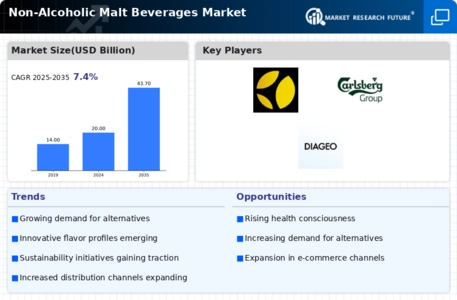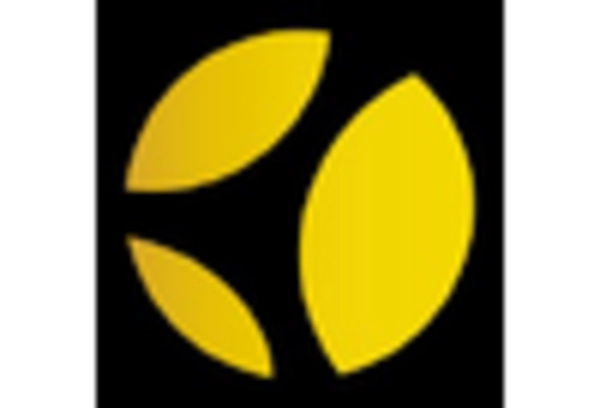The Non-Alcoholic Malt Beverages Market is currently characterized by a dynamic competitive landscape, driven by evolving consumer preferences towards healthier options and the increasing demand for innovative beverage alternatives. Major players such as Anheuser-Busch InBev (Belgium), Heineken N.V. (Netherlands), and Coca-Cola Company (United States) are strategically positioning themselves through a combination of product diversification, regional expansion, and digital transformation initiatives. These companies are not only enhancing their product portfolios with non-alcoholic offerings but are also leveraging technology to optimize their supply chains and improve customer engagement, thereby shaping a competitive environment that is increasingly focused on innovation and sustainability.
In terms of business tactics, companies are localizing manufacturing to reduce costs and improve supply chain efficiency, which is particularly crucial in a moderately fragmented market. The competitive structure is influenced by the collective actions of these key players, who are increasingly collaborating with local distributors and retailers to enhance market penetration. This localized approach allows for better alignment with consumer preferences and facilitates quicker responses to market changes, thereby strengthening their competitive positions.
In August 2025, Heineken N.V. (Netherlands) announced the launch of a new line of non-alcoholic malt beverages aimed at the health-conscious consumer segment. This strategic move is significant as it not only expands Heineken's product range but also aligns with the growing trend of consumers seeking healthier beverage options. By tapping into this market, Heineken is likely to enhance its brand loyalty and capture a larger share of the non-alcoholic segment.
In September 2025, Coca-Cola Company (United States) revealed a partnership with a leading health and wellness brand to co-develop a new range of non-alcoholic malt beverages infused with functional ingredients. This collaboration underscores Coca-Cola's commitment to innovation and reflects a broader trend towards health-oriented products. Such partnerships may enable Coca-Cola to leverage the expertise of its partner, thereby enhancing its product offerings and appealing to a more health-conscious demographic.
In July 2025, Anheuser-Busch InBev (Belgium) invested in advanced brewing technology to enhance the production efficiency of its non-alcoholic malt beverages. This investment is pivotal as it not only reduces operational costs but also improves the quality and consistency of the products. By adopting cutting-edge technology, Anheuser-Busch InBev is likely to strengthen its competitive edge in a market that increasingly values quality and innovation.
As of October 2025, the competitive trends in the Non-Alcoholic Malt Beverages Market are increasingly defined by digitalization, sustainability, and the integration of artificial intelligence in production processes. Strategic alliances are becoming more prevalent, allowing companies to pool resources and expertise to navigate the complexities of the market. Looking ahead, competitive differentiation is expected to evolve from traditional price-based competition towards a focus on innovation, technological advancements, and supply chain reliability, as companies strive to meet the changing demands of consumers.

















Leave a Comment